What it Means to be a Phillies Fan

It’s October 1, 1970, and the sounds of ad-hoc demolition ring through Connie Mack Stadium. Chairs, railings, signage, even urinals are rended from the ground; the once glorious ball field is awash with chaos as groups of fans storm the field to rip up grass and gather dirt for souvenirs after Oscar Gamble’s walk-off single.
That grass had once been home to Connie Mack, MLB’s all-time winningest manager; the “$100,000 infield,” named for the princely sum paid to the four A’s infielders of 1912 and to Hall of Famers Lefty Grove, Jimmie Foxx, Eddie Collins, Robin Roberts, Al Simmons, Jim Bunning and many more. But, that day in late September, the field is home to a thronging hoard of fans giving Connie Mack Stadium a characteristically Philadelphian send-off in its final game.
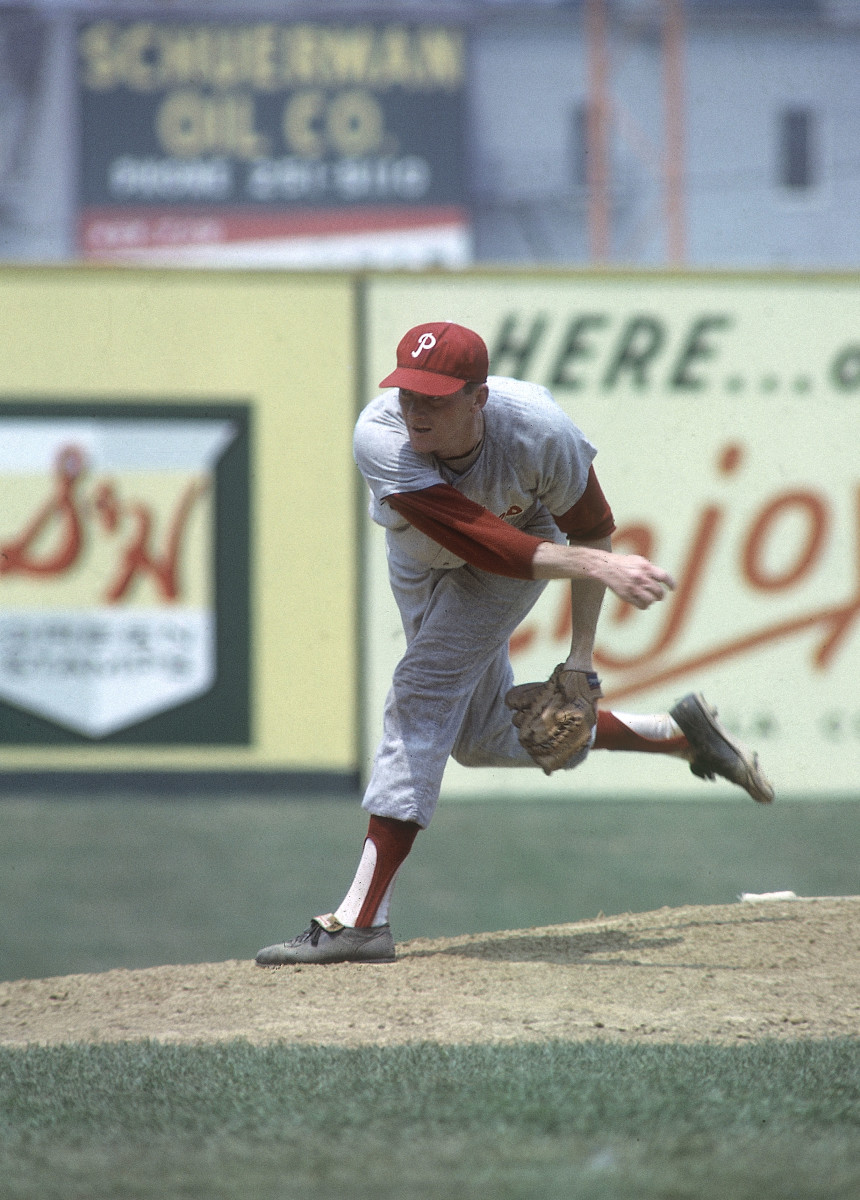
When Connie Mack Stadium, formerly Shibe Park, was being built in 1908, neither manager Mack, nor owner Ben Shibe, could have imagined the future their ballpark would have in Philadelphia.
Clay bluffs, open fields, quagmires and even ponds pockmarked the landscape where chickens pecked and pigs fed at the neighborhoods of Swampoodle and Goosetown where the new park would open its doors in 1909.
Paradoxically, Shibe Park’s brick façade and French renaissance design sang of wealth and prosperity. Stone friezes designed with bats, balls, and catcher’s masks adorned the illustrious exterior of the stadium while cartouches spelled out the Athletics' name. Overlooking the entire scene at the main entrance were terracotta busts of Mack and Shibe.
For all in Philadelphia, Shibe Park was to be a source of pride. The Philadelphia Public Ledger dubbed it "a palace for fans, the most beautiful and capacious baseball structure in the world." American League President Ban Johnson said of the new stadium “Shibe Park is the greatest place of its character in the world."
Yet even the cornucopia of luxury advertised on the outside of the ballpark did not match the display that occurred on the ball field.
Connie Mack’s Philadelphia Athletics were a bastion of American League talent early in the 20th century. Powered by stars like Eddie Collins, “Home Run” Baker, Eddie Plank and Jack Coombs, the A’s, baseball’s first great dynasty, won the World Series in 1910, 1911 and 1913.
Shibe Park regularly filled to capacity. Capable of holding 23,000 fans at its opening, loyal supporters unable to obtain tickets filed outside the ballpark to the row homes located beyond the right field wall where homeowners sold tickets to watch from their balconies and resold nickel hot dogs from vendors for a dime.
Young boys patrolled the outfield streets, cajoling pedestrians into their households where they might climb stairs to roofs filled with fellow fans who had also been turned away at the stadium gates. There they would witness history being made amongst tens of thousands of fellow hopefuls in the City of Brotherly Love.
As Ben Shibe had hoped, Shibe Park had become for “the masses as well as the classes.”
Just a few years earlier Philadelphia’s Hospital for Contagious Diseases, “the smallpox hospital,” meant the area was untouched. With the hospital now closed, the wealth of the A’s and Shibe Park spilled beyond its walls, creating for the first time, a prosperous neighborhood around 21st and Lehigh in North Philadelphia.
Yet for all the A’s luster, profits did not match expenses, and debt forced a fire-sale during the winter of 1914-15. The A’s dropped from first to last place in 1915, 58.5 games behind AL champion Boston Red Sox. It would be 15 years before Shibe Park would again see a successful major league baseball team.
The late 1920s found an aging Mack in control of another dynasty. This time the A’s won another two championships before the effects of The Great Depression induced another firesale.
The A’s would not recover. Goodwill between the club and fans began to fade as the Depression added to the debt of the Shibe family, and fans in Philadelphia struggled to pay for tickets.
The neighborhood that came to surround the park, known as North Penn, seemed a microcosm of the cultural melting pot that had become typical throughout America prior to and during the Depression.
A predominant Irish neighborhood, Italians were business owners in “Little It-ley” where the “Yids” lived above their shops. Sprinkled throughout North Penn were smaller enclaves of German and English Protestants who formed an upper middle class.
Across all ethnic lines, racial tensions were fierce. One Strawberry Mansion Jewish boy remembered walking through the cauldron of North Penn to the ballpark, believing that the other ethnicities were bound by their Christianity and also by their hatred toward the Jews.
However, as the Depression deepened, North Penn would now be united by a new hatred, this time toward “Spite Wall.”
Furious for years at the homeowners beyond the right field fence who sold tickets to their rooftop balconies for cheaper than stadium seats, the Shibe family erected a 34-foot high fence in 1935, entirely blocking sightlines from outside the stadium.
Since Shibe Park opened the property values at 2700 N. 20th Street had increased. Now the ugly corrugated metal structure caused those same values to plummet. Not only were the A’s Philadelphia neighbors upset, but so too were players who complained that it robbed them of home runs.
In one fell swoop the A’s, Mack and the Shibe family lost almost all goodwill they had built and then regained in the 1910s and late 1920s. The hatred ran so deep that the living Shibe family members sold their remaining shares in the A's to club patriarch Mack for whom the ballpark would be re-named. Yet, an even bigger problem was on the horizon for the venerable manager, now team and stadium owner.
With nearby Baker Bowl, home of the Philadelphia Phillies, falling into disrepair, Shibe Park added a new tenant. In 1938, the Phillies, perennial laughing stock of the National League, joined the A’s in calling Shibe Park home.
That year the Phillies and A’s combined for just 98 wins in 308 games. Fans had lost faith in the A’s. The Phillies had almost no fans left, having had just one winning season since 1917.
Even in 1950, when the Phillies finally brought a pennant winning club back to Philadelphia, residents at 2700 N. 20th Street were still bitter. Fathers would tell their children, “Connie Mack built that spite fence so you couldn’t see the games from across the street. He was that cheap.”
2700 N. 20th Street homeowner Bill Miller said of the Mack and the A’s in Bruce Kulich's To Every Thing a Season: Shibe Park and Urban Philadelphia, 1909-1976, “They took all the golden eggs.”
During the Depression, the North Penn neighborhood, like everywhere else in America, saw a drastic downturn in its economy. Both local banks shuttered, small businesses closed, employers cut back on help and joblessness rose to 30 percent. While ethnic hostilities still simmered, economic deprivation brought the neighborhood together, creating a cohesiveness against the outside world.
Though the economy recovered after World War II, the A’s never did. Meanwhile after years of futility and apathetic fans, the “Whiz Kid” Phillies took the National League by storm in 1950, finishing first in National League wins and attendance while the A’s finished with 52 wins and barely 4,000 fans a game.
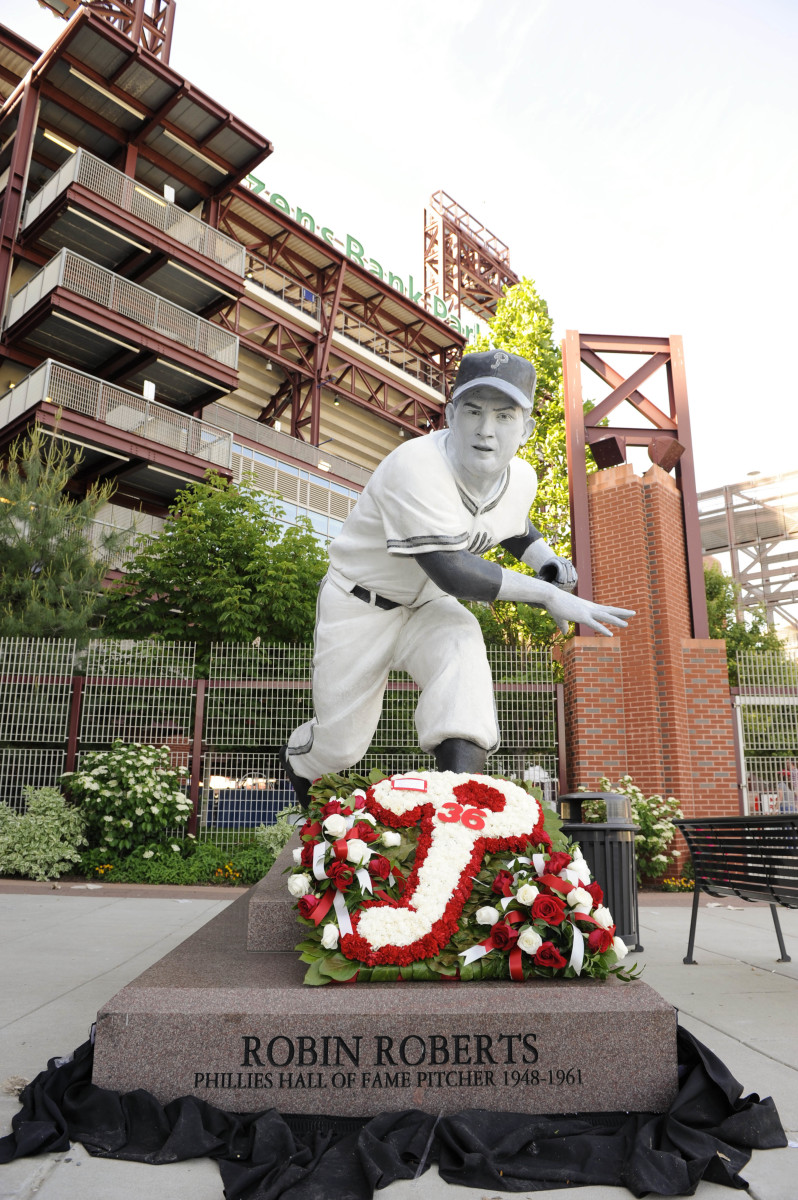
Mack was by then the oldest manager in major league history. Bobby Shantz, a second year pro that season, recalled Mack at age 87 in the dugout, his 60-year-old son Earle, by his father's side, helping him follow the game.
“He had difficulty staying with the ballgame,” Shantz said in Donald Honig's Baseball Between the Lines. “Sometimes you’d have to wait and wait for a sign to come… to tell you the truth, I don’t think he knew my name.”
On dusty afternoons in the A’s dugout, unproven youngsters and past-their-prime vets, the only players the A’s could afford in those days, remember Mack slumped over sleeping or calling out long retired players to pinch hit or substitute in the field.
But Shantz grew up in Pottstown, just outside of Philadelphia, “Of course [Mack] was a legend there.”
Indeed, Mack had become a legend throughout the baseball world. Today he remains MLB’s all-time winningest manager by almost 1,000 games. He won five World Series title and eight pennants, but the end of his time with the A's would spell the end of their time in Philadelphia.
After 1950, Connie Mack, “the Grand Old Man of Baseball” retired, and the A’s played the first season in their history without him on the bench. Jimmy Dykes took over as manager and for four more years the A’s were basement dwellers in the American League. Meanwhile in the front offices, Mack’s heirs fought petty squabbles over the remaining shares of the ball club.
In 1954 the Philadelphia Athletics, amidst a sea of debt and a dwindling fan base, moved to Kansas City, leaving behind a deeply mortgaged Shibe Park, now named Connie Mack Stadium, to its sole tenant, the Phillies.
After their 1950 success, the Phillies would again languish in mediocrity for another decade. But in 1964, it seemed like the Phillies finally had a chance at breaking their long slump.
It had been 14 years since the Phillies last won a pennant and 49 years since 1915, when they had last won a postseason game.
Managed by the ever-steady Gene Mauch, the 1964 Phillies finally had another youth movement. Young sluggers were coming through the ranks like Dick Allen and Johnny Callison, while Chris Short and future Hall of Famer Jim Bunning anchored the rotation.
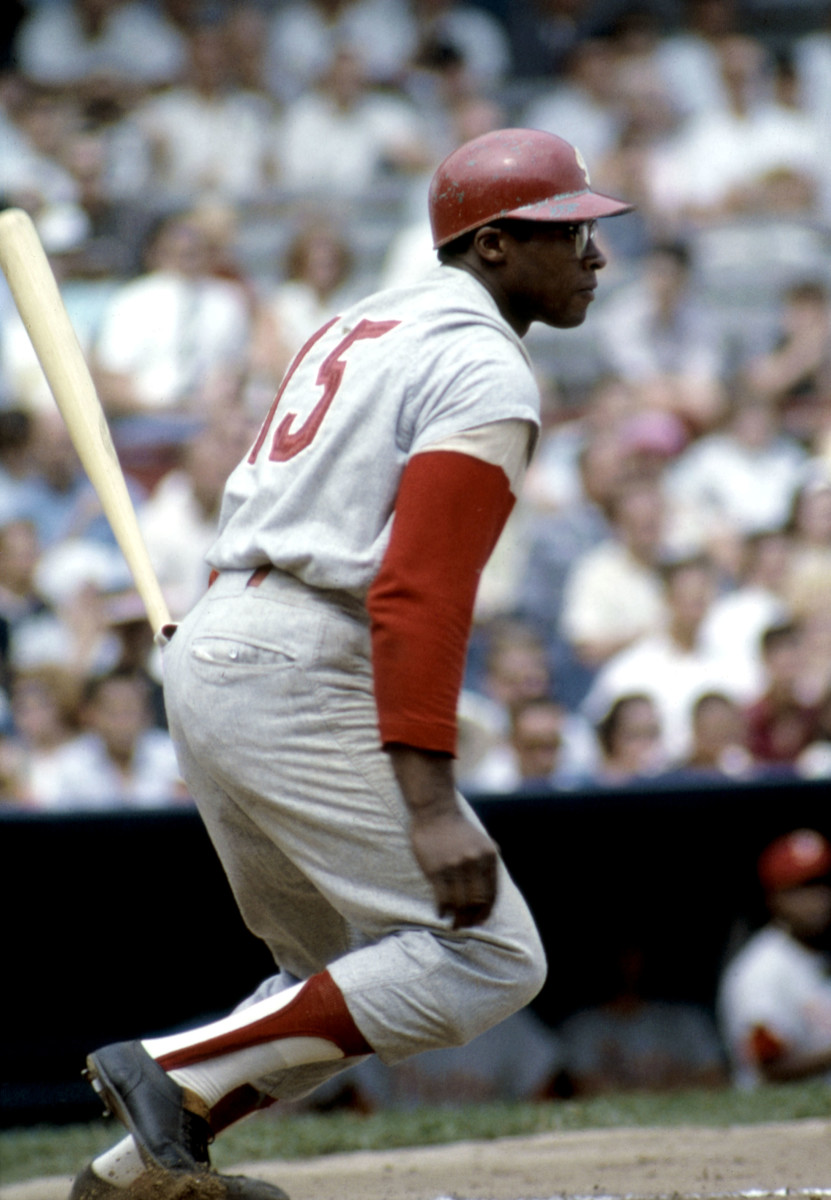
With just 12 games to play, the Phillies led the National League by 6.5 games. Fans made home made pennants and brought them to ballgames, TV Guide’s World Series preview featured a picture of Connie Mack Stadium and Bunning was photographed after a complete-game win on September 20th for Sports Illustrated’s World Series edition.
That win would be the Phillies' last in September. “The Phold” as it came to be known, was the greatest collapse in Philadelphia sports history.
There were “ghosts from 1964 at Connie Mack Stadium,” said former Phillies shortstop and manager Larry Bowa.
Bowa joined the Phillies in 1970, but even then, the collapse of ‘64 was still deeply entrenched in team culture, “everybody talked about 1964,” Bowa said.
After nearly doubling attendance at aging Connie Mack Stadium from just over 9,000 in 1962 to nearly 18,000 in 1964, the Phillies would never again draw as many patrons to its now hallowed ground.
By 1968 the Phillies had broken ground on a new ballpark, to be named Veterans Stadium. It was a $63 million dollar spacious new arena which required Philadelphia voters to confirm cost overruns multiple times. Most importantly, “The Vet” as it came to be known, would have 15,000 available parking spaces at the South Philly Sports Complex.
Fans who visited Connie Mack Stadium in the late 1950s and throughout its final years in the 1960s almost unanimously mention the lack of parking as its greatest its greatest flaw.
North Penn was by then a dilapidated neighborhood. Long gone were the days of spectators filling nearby balconies. Now a much poorer area, disconnected from any major thoroughfare, Connie Mack Stadium was both difficult to drive to and difficult to park at.
“I got out of the car... and these guys came up and said ‘Hey you want us to watch your car?’ and I went ‘What?’” said Bowa about his first day at Connie Mack Stadium.
Luckily a veteran teammate explained to Bowa, “‘You better pay these guys, if you don’t there’s a good chance when you come out your tires will be gone or slashed.”
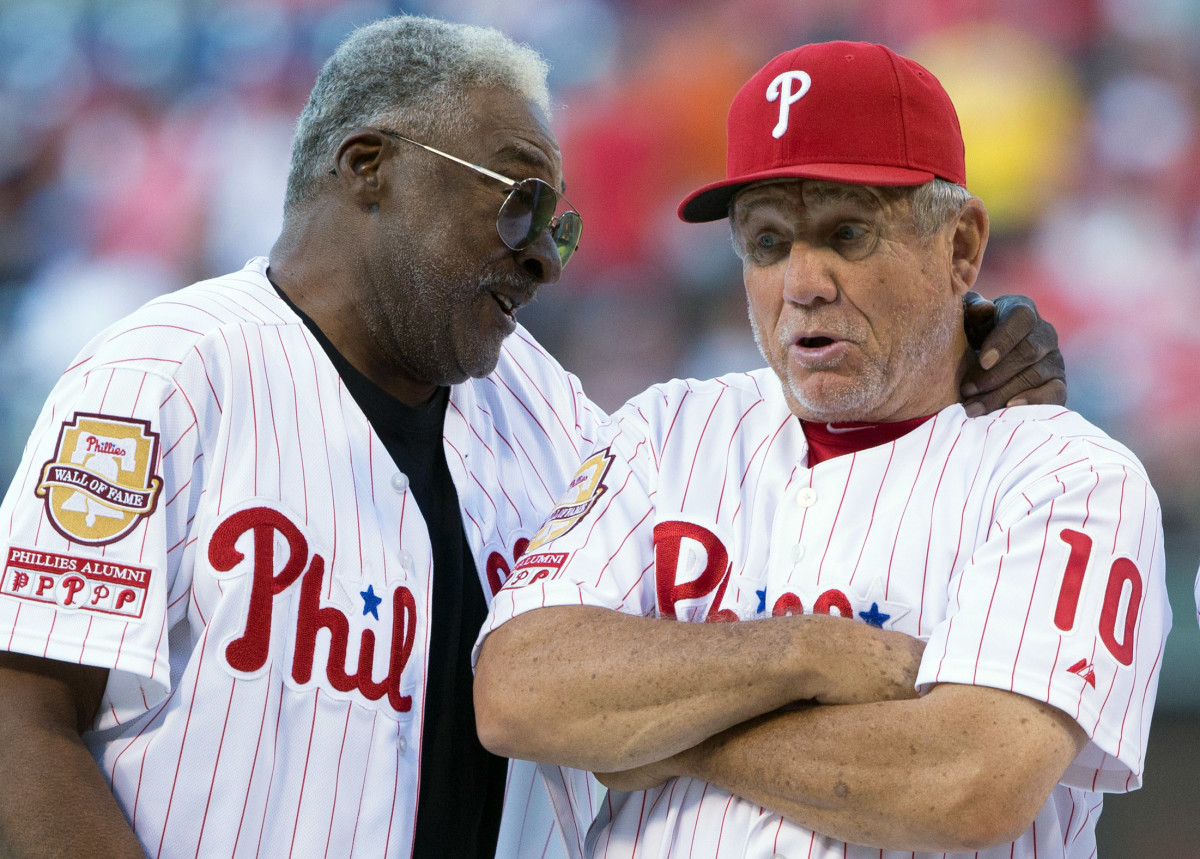
Newspapers that had once described Shibe Park as the jewel of the American League now described Connie Mack Stadium during Opening Night in its penultimate season as “old”, “tired” and “dreary.” Seats were unpainted and The Philadelphia Inquirer was excited that soon fans would get to enjoy baseball without “slums or worries.”
But fans who remembered the glory days of the Philadelphia A’s brought their children and grandchildren to see the ghosts of their former majesty. They’d tell them about Connie Mack selling off his dynasties, “He didn’t have any money himself,” they’d say. Others talked about Spite Wall, “There used to be seats on top of those houses across the road there,” they’d tell their children.
The Phillies entering their final year at Connie Mack Stadium in 1970 were beginning yet another youth movement. Players like Rick Wise and Don Money, along with Bowa joined a young club playing at an old park.
By the final game of the season on October 1, the Phillies were well out of first place, 15.5 games back of the Pirates. The club had managed to draw just over 8,000 fans a game that year and barely 1,000 the previous day, but that Thursday 31,822 people, a capacity crowd, came to say goodbye.
As the game drew on, former Phillies Director of Public Relations, Larry Shenk, remembers the scenes from his vantage point.
“I was in the press box and I swear the press box was shaking,” said Shenk.
Fans had brought their own tools to aid in the demolition of the ballpark. Well-dressed men joined women and children in removing anything that could be unharnessed from the concrete.
As fans stormed the field after the game ended, Phillies Vice President Bill Giles screamed, “Keep off the field. Keep off the field!” But it was no use. The throng either did not hear or, more likely, did not care.
In a melee at the center of the field, 35 people had “their heads bashed” with slats of wood removed from various places around the ballpark.
The Phillies' insurance company, in anticipation of the destruction that would follow, dropped their coverage of the park for its final few games.
Though the fans could not physically destroy the past, perhaps they sought to destroy the memory of “Spite Wall” and Mack’s fire-sales. Perhaps they hoped to destroy the Phillies 16-straight losing seasons from 1933-1949. Perhaps they aimed to destroy the fact that they lost their once cherished Athletics to Kansas City. Or maybe they just wanted a souvenir.
Six months later, the Phillies returned from a particularly cold winter to baseball in Philadelphia at palatial new Veterans Stadium.
Shenk remembers walking into the new building that spring, “It was awesome, it was overwhelming to see this big place, it was beauty.”
Over half a century after its opening, Shenk’s awe was still palpable. The Vet was entirely different from the confines of Connie Mack. Capacity for baseball games more than doubled from 31,000 to 66,000. Though much intimacy was lost in the move, the Phillies established themselves as a big club in a big ballpark in South Philadelphia.
While they still languished in the cellar of the National League for another few years, the Phillies burst back onto the scene in 1976 with the first of three consecutive division titles. In 1979, they signed Pete Rose to a four-year, $3.2 million contract, the highest payday ever for an athlete at the time.
In 1980, the Phillies again won the NL East and this time they did what the teams of 1964, 1976, 1977 and 1978 had failed to do — they made the World Series. On October 15, the Phillies won their first World Series game since 1915.
Seven days later the World Series returned to Philadelphia after three games in Kansas City against the Royals, and future Hall of Famer Steve Carlton was on the mound, ready to give the city its first baseball championship in 50 years.
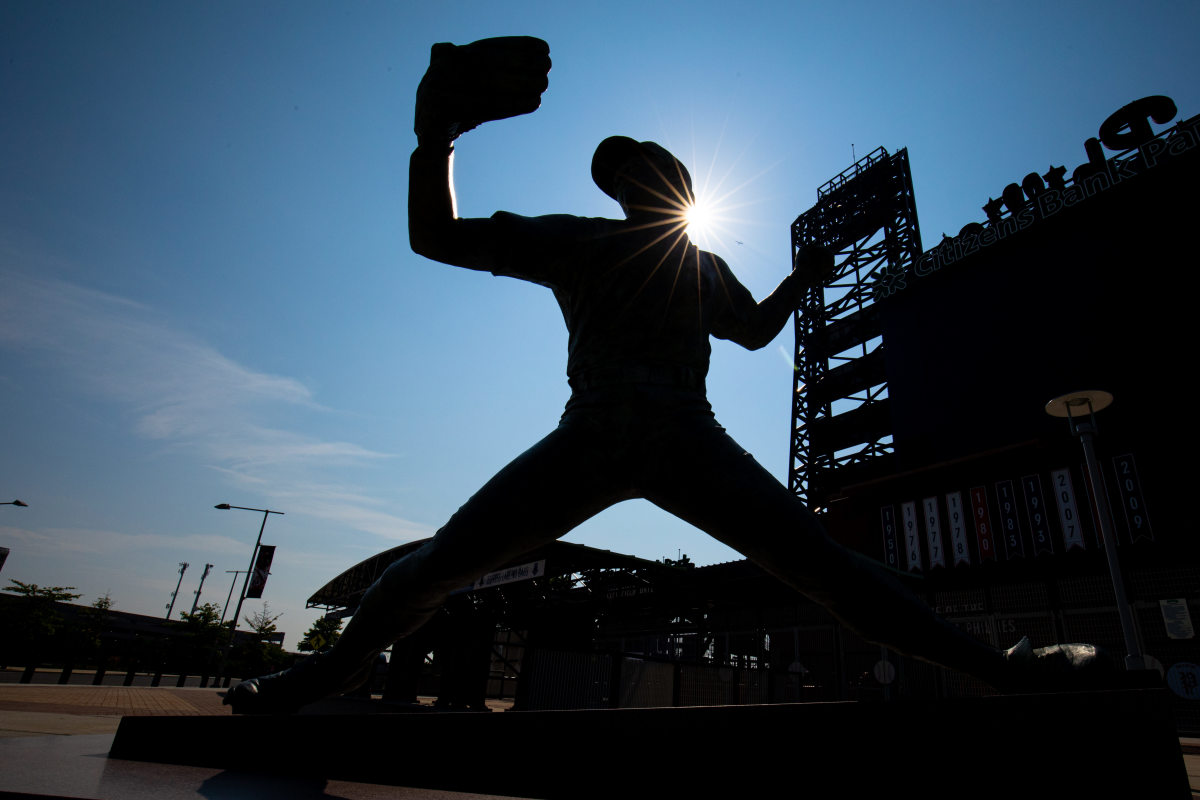
Will Macht remembers driving 89 miles up I-95 from his Navy ship in Baltimore that day to get to The Vet, “The place was electric… it was gonna happen that night.”
Macht and every other fan could feel it in the air. After all the years of suffering, it just seemed like it was the night.
It’s past 11pm on October 21, 1980 and Phillies screwball closer Tug McGraw stands at the stretch on the mound. He looks around at the stadium, it's ready to burst at the seams. The bases are loaded, but the Phillies are up 4-1. McGraw’s arm is wasted and he’s dead tired, he’d thrown over 100 pitches that series.
There’s only one out, but McGraw’s about to witness something he’ll later call “divine intervention.”
Royals second baseman Frank White pops a foul ball down the first base line. Catcher Bob Boone begins to circle under the ball, he’s waiting for first baseman Rose to call him off, Boone is getting closer and closer to the dugout but he doesn’t know how close, he’s getting tentative as he sticks out his glove at the last second for the grab and drops it… but Rose is there to snag the ball out of the air from underneath Boone’s glove. The stadium erupts.
Rose bounces the ball off the turf and flicks it back to McGraw, two outs.
Macht is in the stands in disbelief, even in 2021, he still can’t believe what he had seen, calling it “an act of god.”
Now policemen on horseback line the outskirts of the field looking to avoid a repeat of the final game at Connie Mack Stadium.
“I looked over there at the end of our dugout and I saw that horse, and its tail went up and *KABOOM*, he was not stadium trained,” said McGraw in a 2000 documentary, “Right there on the turf is this despicable stuff and I thought to myself if I give up a home run here… that’s what I’m gonna be, to all the fans in Philadelphia, that’s what I’m gonna be.”
It’s 11:29pm when McGraw throws a fastball right down the heart of the plate for a Willie Wilson swing and miss. Philadelphia has won a World Series. The stadium explodes as McGraw throws his arms in the air waiting to be mobbed by his teammates.
A flare is thrown from the upper deck and lands on the Royals dugout. Fireworks crackle above the nylon turf. Dozens of fans evade the horses and swarm the Phillies on the infield. The scene is almost out of a movie, saccharine.
For the second time in barely 10 years, the Phillies have had fans storm the field. At Connie Mack Stadium, they came in anger and sadness, filled with confused emotions at the funeral for their once beloved ballpark. But tonight they’re filled with an uncontainable euphoria.
On Broad Street, fans fill the thruway, in South Philly bars roar with excitement, fireworks go off all throughout the city. Yet it’s quiet at 21st and Lehigh.
Only ghosts now roam the empty lot in North Penn where Connie Mack once gave Philadelphia five titles. Eddie Collins, “Home Run” Baker, Stuffy McGinnis and Jack Barry have all long passed on. Lefty Grove’s blazing fastball is no more than a wisp in the wind. Jimmie Foxx’s towering home runs only remain in the minds of the old men and women who once took the trolley to Shibe Park long ago.
Like invisible ink, the echoes of Connie Mack Stadium have begun to fade, just as one day the recollections of the 1980 and the 2008 Phillies World Series will fade. But in the collective minds and memories of Philadelphia they live on, forever a part of the culture that shaped the City of Brotherly Love.
More From SI's Inside The Phillies:
- With Knebel, Have the Phillies Found Their Closer?
- With the Lockout, Where Do the Phillies Go From Here?
- How Did Baseball Wind Up Here? Everything to Know About the Lockout
Make sure to follow Inside the Phillies on Facebook and Twitter!
